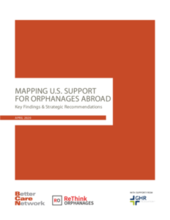Displaying 591 - 600 of 2176
This article provides a conceptual depiction of how schools and treatment foster parents partnerships can be formed and maintained.
This study examined the relation between neighborhood disorder and children’s internalizing and externalizing problems among children in kinship care and tested caregivers’ social support as a potential mediator.
Join this webinar on Thursday, April 9, 2020 from 3:00-4:00 pm EDT, to learn about "Flourishing Families," an activity-based curriculum for family-serving professionals.
This exploratory study examines practitioners’ and foster parents’ perceptions on use of Parent–Child Interaction Therapy in child welfare.
"The increased stress we're seeing in families due to the virus can increase children's risk of abuse at the hands of their loved ones," says this article from CNN.
This study addressed three research questions: (1) What are ACE totals in this sample of foster parents and how do they compare with the original CDC-Kaiser study? (2) Does foster parents’ ACE exposure relate to foster child behavior? (3) Is the relation between foster parents’ ACEs and children’s challenging behaviors different based on the specific ACE?
This article from PBS News Hours describes the concerns of child welfare experts that the COVID-19 crisis will lead to higher rates of child abuse in the US.
This qualitative study utilized the experiential voices of current and former youth in foster care, caregivers, and agency staff to broaden the understanding of the needs of youth with foster care histories, as well as provide a contextual lens for exploring potential risk factors leading to homelessness.
This study intended to identify factors associated with receipt of mental health services by caregivers substantiated for maltreatment.
This report lays out the results of a preliminary mapping exercise to document the ways in which the United States supports and perpetuates overseas orphanages. It is based on: an analysis of existing data; a literature review of U.S government publications and investments; a review of non-profit organizations and foundation activities; an analysis of key supply chains and stakeholders; and the identification of existing data gaps.

